A shaft edger is a tool that you can use to trim grass in narrow spaces. You might be planning to buy one and wonder if you should invest in a straight-shaft or curved edger. Keep reading because we have done the research to provide you with everything you need to know about the two kinds of shaft edgers.
A straight-shaft edger is best for cleaning up the edges of a lawn in narrow, hard-to-reach areas. A curved-shaft edger is best for cleaning the edges of a lawn that is easily accessible and frequently maintained.
The motor of a straight-shaft edger has a higher torque than the motor of a curved-shaft edger, which is why a straight-shaft edger is better suited for areas where tougher debris exists. A curved-shaft edger has a faster speed blade which can create a cleaner cut across overgrown grass.
Both straight- and curved-shaft edgers can be used to clean the boundary separating a lawn and a pathway. Unlike a trimmer, edgers are specifically designed to create clean lines at the edge of the lawn. Continue reading as we discuss other essential details about straight- and curved-shaft edgers.
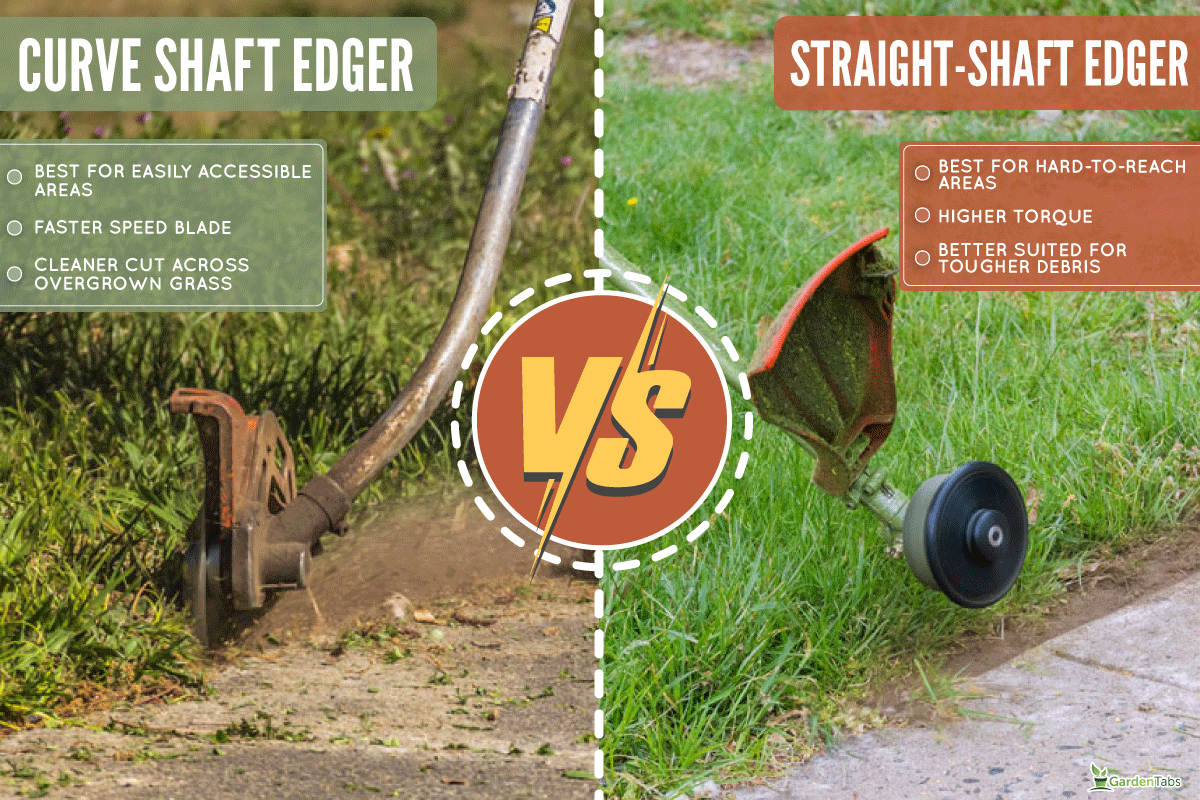
Straight-Shaft Edger Vs. Curved-Shaft Edger
Edgers are garden tools used to clean up the edges of a lawn. They are used to trim or remove excess plant growth and soil debris that is reducing the width of the pathway or sidewalk. By using an edger, the original boundary between the pathway and the lawn can be restored.
Although both are edgers, there are a couple of distinct differences between a straight-shaft edger and a curved-shaft edger. Their differences extend beyond the design of the shaft. We'll discuss below what their differences are, and what edger is better for you.
Which Is The Better Edger?
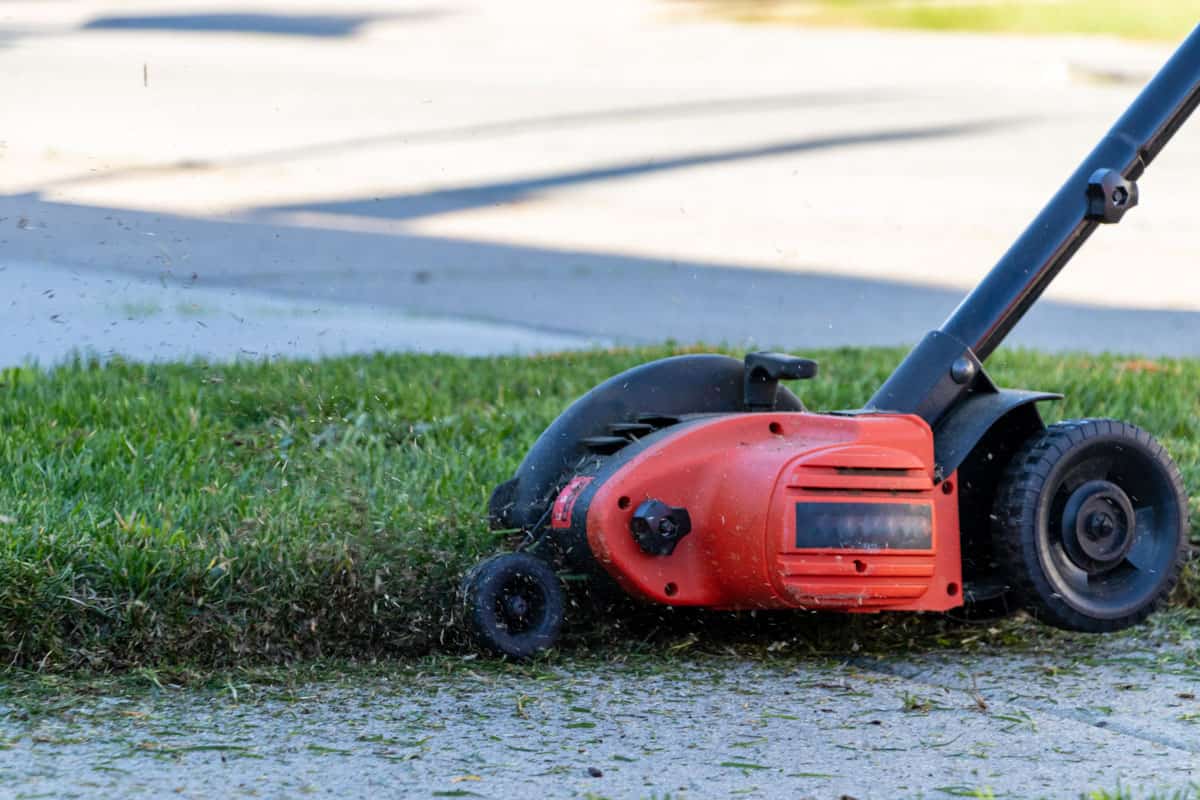
The better kind of shaft edger will depend on the type of work that you are planning to complete. Both tools are designed for different edging tasks and one tool is not completely better than the other.
Just as we mentioned before, a straight shaft is best for edging areas in your lawn that are otherwise too difficult to reach. On the other hand, a curved-shaft edger is best for lawn edges that are easily accessible and frequently maintained.
Straight-Shaft Edger
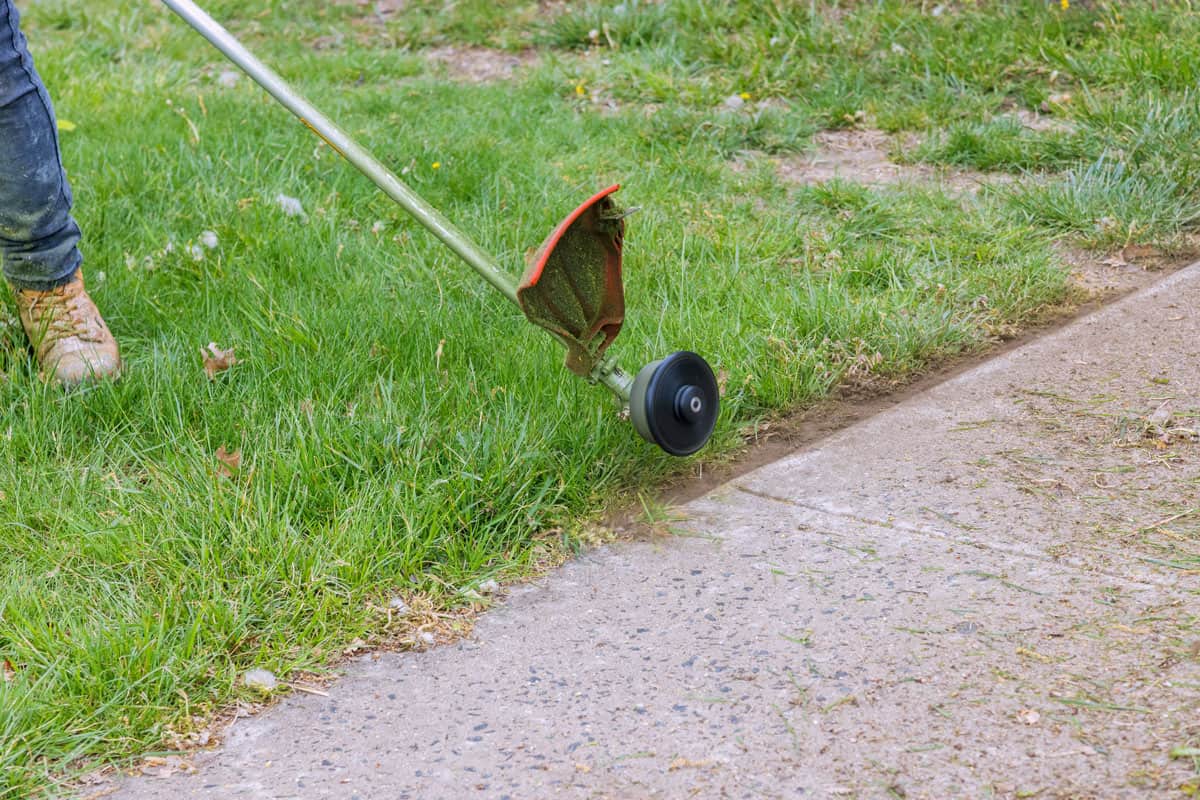
A straight-shaft edger is best for hard-to-reach areas due to its straight shaft. The absence of curvature on the shaft lessens the overall space that the tool will take up while it is being used.
Because of the thin shaft of a straight-shaft edger, it is better used for reaching lawn edges that are beside walls, fences, bushes, and flower beds.
A straight shaft will allow the user to reach narrow areas. By design, it is basically an edger on an elongated shaft, that will allow the user to extend their reach when necessary.
It also has a higher torque compared to a curved shaft edger. The higher torque makes the edger a choice for gardening tasks that involve trimming overgrown plants as well as restoring the boundary in the soil. The higher torque provides more trimming strength for the straight shaft edger.
Curved-Shaft Edger
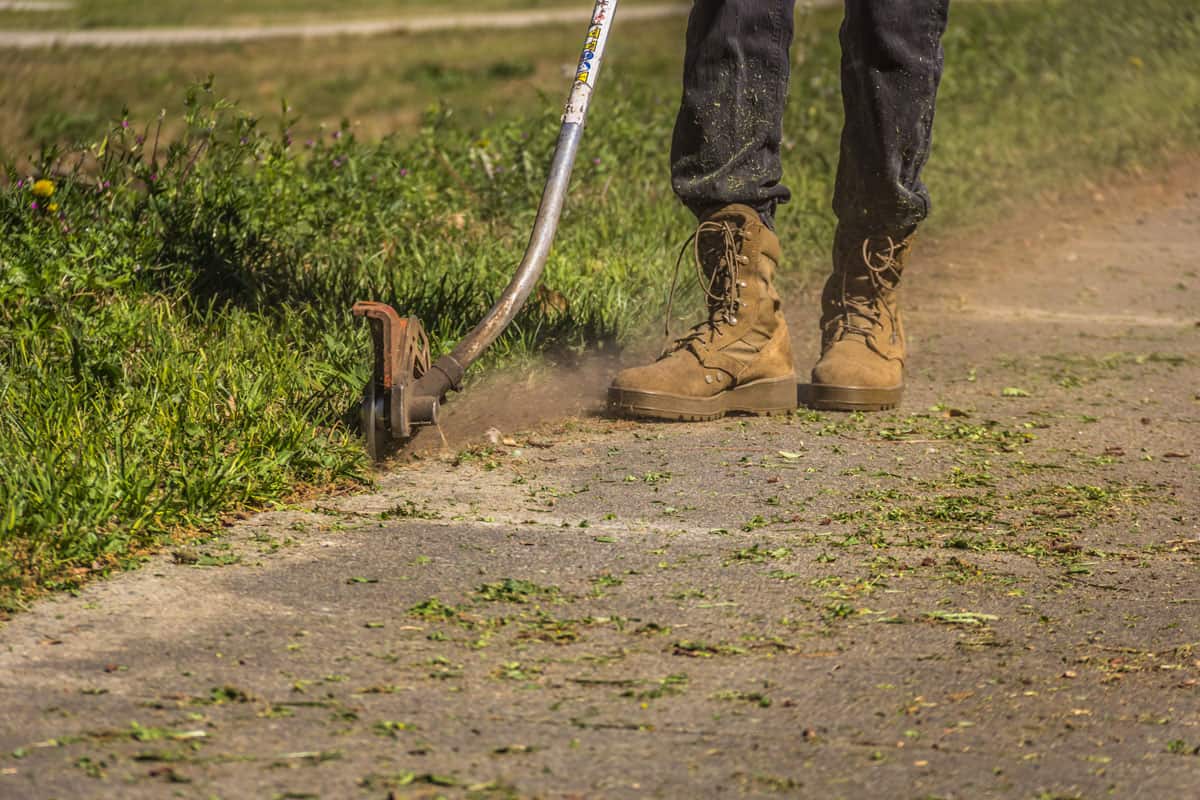
Curved-shaft edgers are best to used in easily accessible areas that are frequently maintained. This is because a curved shaft edger is designed to keep the user on the other side of the motor.
One of the main purposes of the curve in the shaft is to distance the user from the motor. This feature of the curved shaft edger creates a safer working environment for the user because they will be situated on the other side, away from the flying debris expelled by the blades.
The added curvature on the shaft of the edger is designed to create a better balance for the user. This makes a curved-shaft edger more comfortable to use, especially for gardens that need frequent edging.
Curved-shaft edgers are better in terms of balance and comfort, which can benefit the user. In addition to protecting the user from the flying solid debris that the blades of the edger occasionally expel, the curved shaft also allows the user to have a better view of the cut from the side.
A curved-shaft edger provides a clearer line of sight for the user, which can improve the overall outcome of the task. This can reduce the chances of the edger damaging nearby objects that could not be removed before edging.
What Is The Difference Between The Edgers?
Besides the curve on the shaft that increases user comfort and the increased torque of a straight-shaft edger, the prices of both tools are significantly different.
Generally, a curved-shaft edger is more affordable compared to a straight-shaft edger. Due to the added comfort and cheaper price, a curved-shaft edger is more popular than a straight-shaft edger.
Can You Edge With A Straight-Shaft Trimmer?
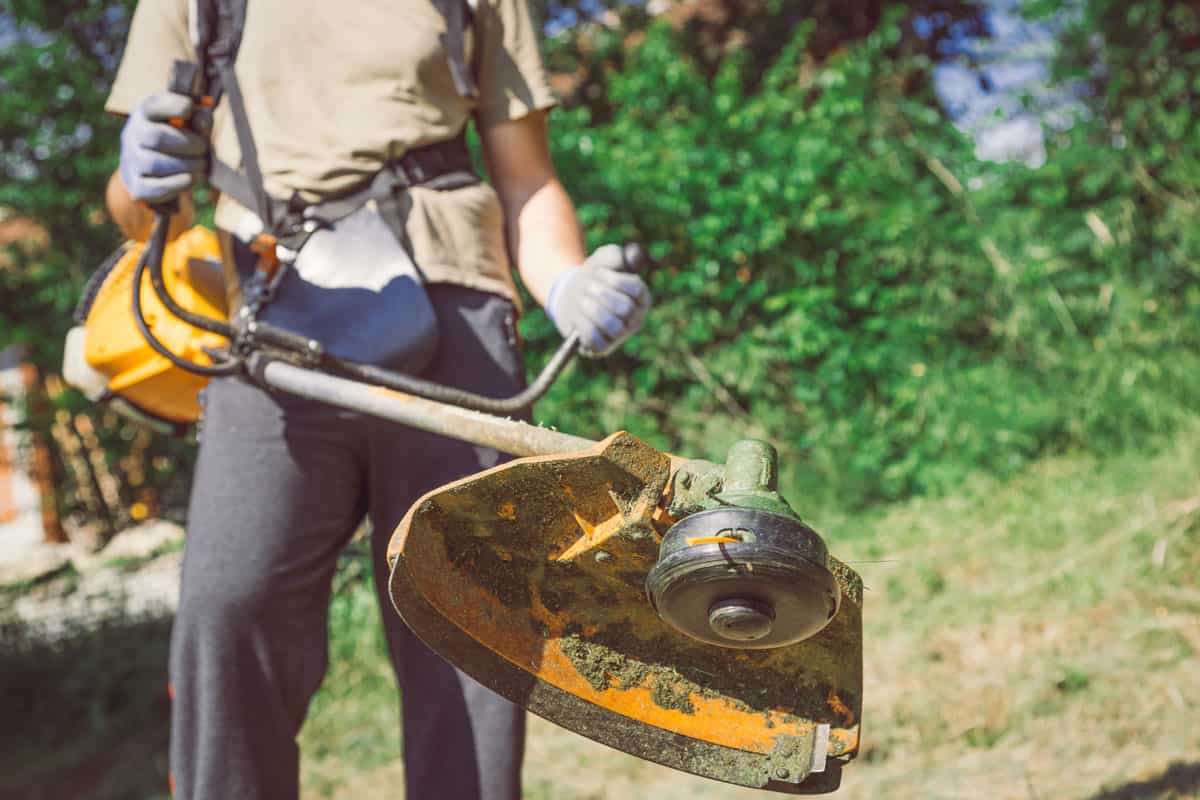
You can clean your lawn edges with a straight-shaft trimmer. However, there is a significant difference between a straight-shaft trimmer and edger.
A straight-shaft trimmer is only capable of trimming grass and other plant debris. A lawn edger is designed to cut through natural materials other than plants.
There is a type of gardening tool that can be used as both a trimmer and an edger. This type of tool can be used as a plant trimmer when positioned horizontally and as a grass edger when positioned vertically across the perimeter of the lawn.
However, it is important to note that this type of gardening tool usually utilizes string. The string is attached to a spool inside the motor, which then spins at a high torque that forces the string to extend outward.
When the string spins at a fast enough speed, it can cut through plant matter, but it is not durable enough to restore the boundary between a lawn and the pavement or to restore an original boundary buried under shifted soil.
Which Is Better—A Trimmer Or An Edger?
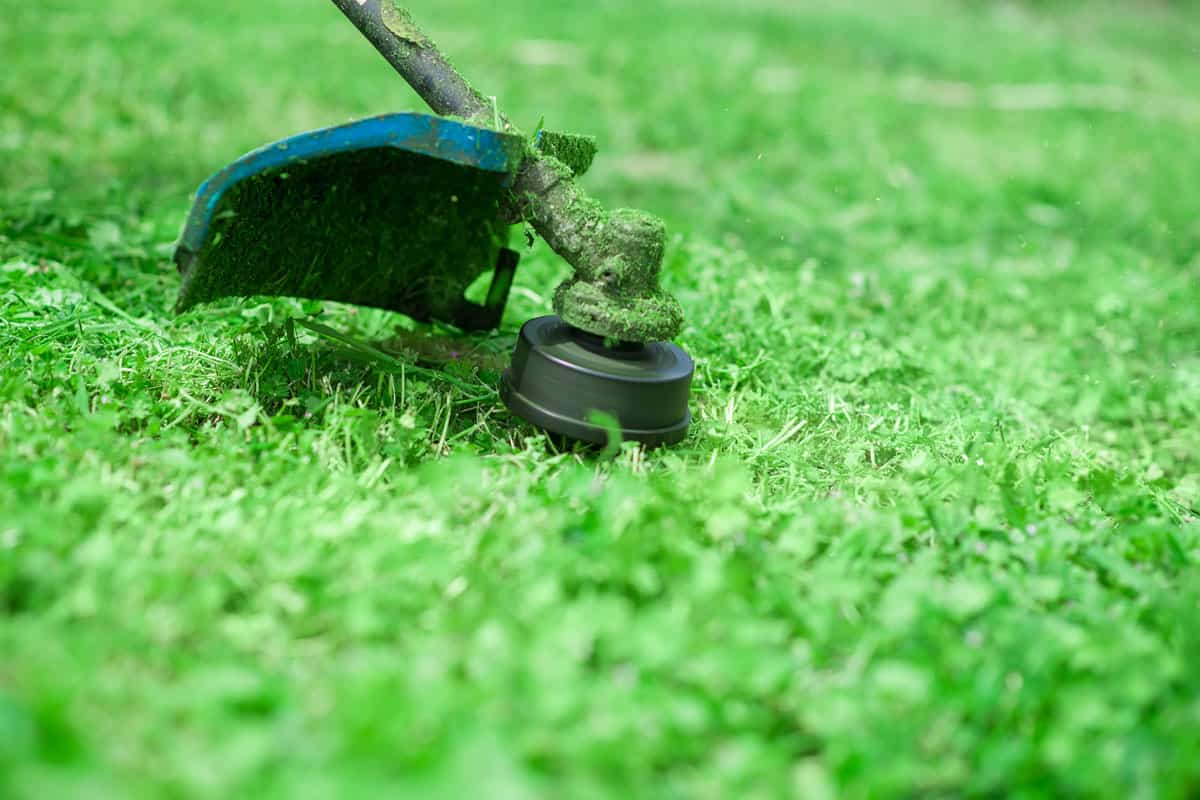
Similar to a straight or curved edger, the better tool when deciding between a trimmer and an edger will depend on the task at hand. There are other types of tools you can choose from for edging.
For simple grass trimming, a shaft trimmer can easily cut through grass that might be extending out of the pavement. It is good for restoring the clear line that separates the grass from the pathway.
Click here to shop for a string trimmer/edger on Amazon.
If you are planning to restore a lawn edge that is hidden under grass and soil, you can use an edger.
An edger is specifically designed to trim grass as well as remove dirt, soil, rocks, and tough weeds. Instead of string, an edger utilizes a spinning steel blade that can cut through tougher material.
Click here to shop for a cordless edger on Amazon.
A more durable type of edger is called a walk-behind wheeled edger. Unlike a shaft edger that is used to restore edges that might have been hidden under grass and soil, a walk-behind wheeled edger is used to create an edge in the soil.
If you are planning to create a new edge on your property, you can use a walk-behind wheeled edger. A walk-behind wheeled edger is high-powered compared to a shaft edger.
To Wrap Up
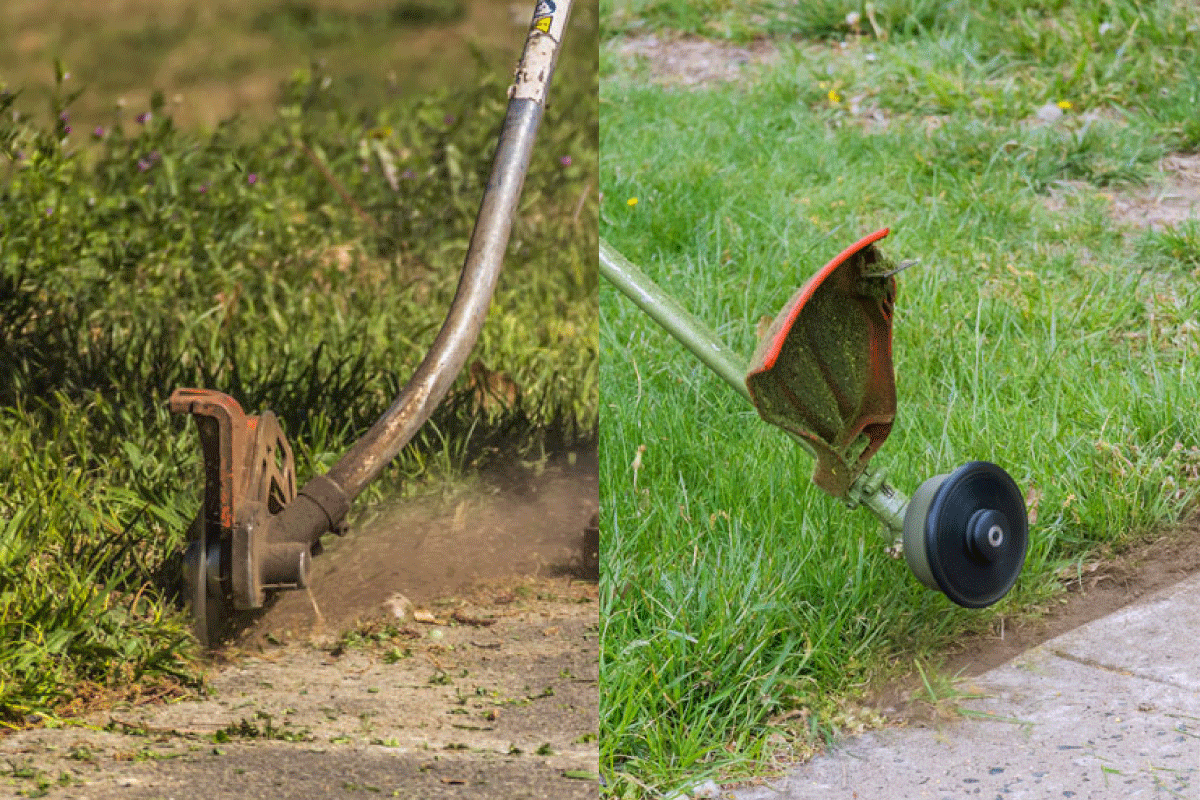
A straight-shaft and a curved-shaft edger have similarities as well as differences. The best tool for each user will depend on the needs as well as the type of edging they plan to do.
In this article, we discussed which type of edger will best suit the task at hand. We also discussed if you can use a trimmer for edging and if a trimmer is just as good as an edger. Make sure to choose the correct gardening equipment to finish your task successfully.
Made it to the end? Check out some of our other related posts!
Can You Use An Edger Along A Fence [Without Causing Damage]?
How To Use Black & Decker Edger [Step By Step Guide]



